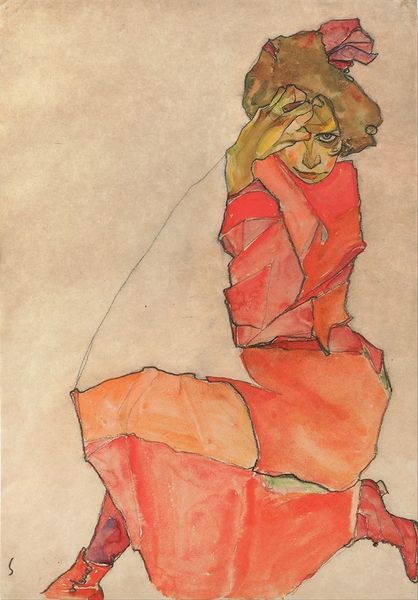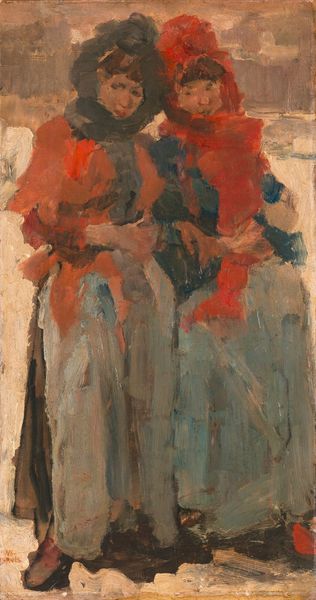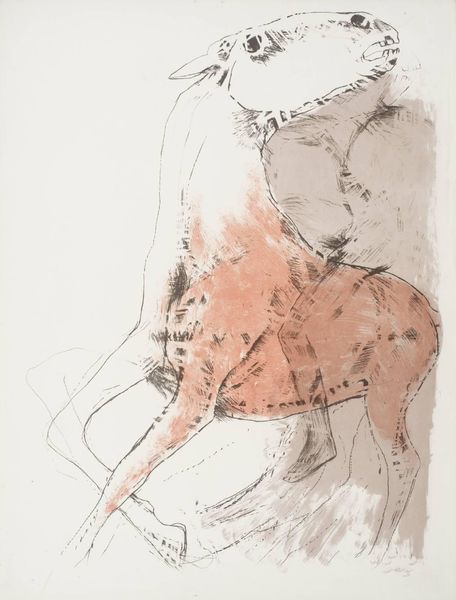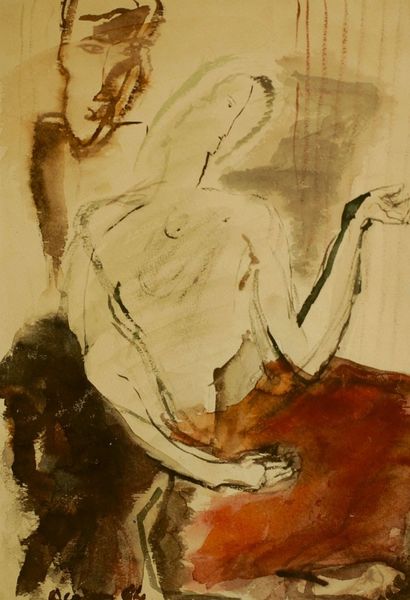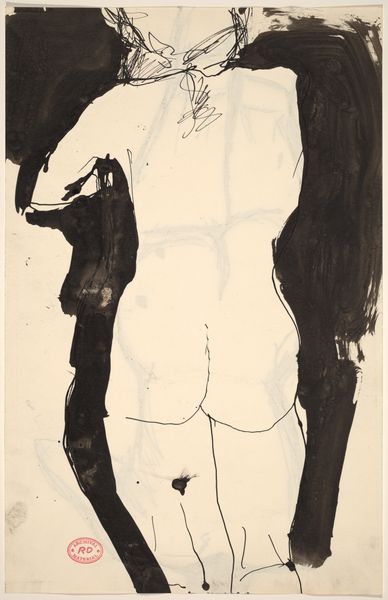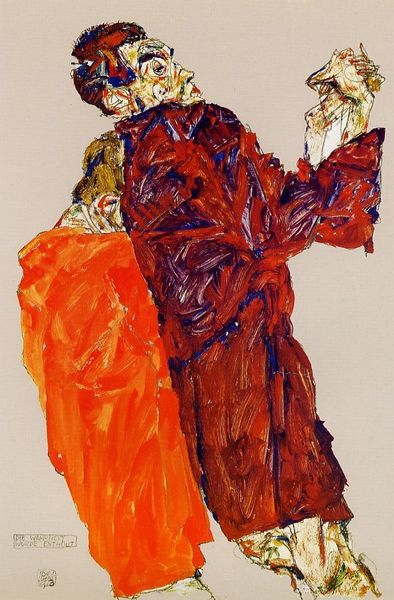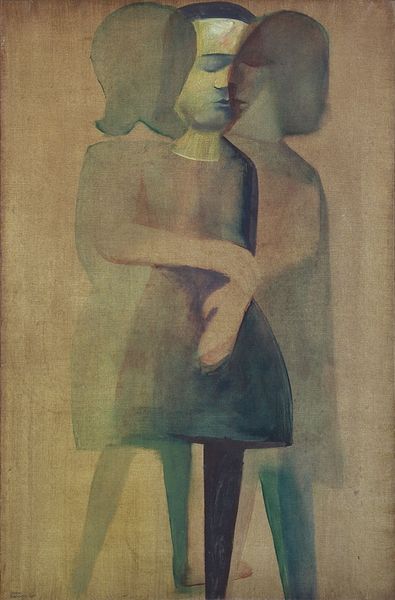
Copyright: Public domain
Editor: We're looking at "Life (triptych) - Love" by Fedir Krychevsky, painted in 1927. It's an oil painting housed at the National Art Museum of Ukraine. The figures almost feel geometric and sculptural. The colors are striking – especially that bold red. What's your take? Curator: The composition certainly stands out. Note the stylized rendering of the figures; the reduction of forms to almost planar shapes is paramount. Consider how this formal abstraction functions to enhance the painting's symbolic impact. Is there tension created by the color contrasts between the red and muted browns and whites, directing the eye? Editor: Yes, I do see what you mean! The shapes are simplified, but then the color choices create almost a sense of drama. Does this flattening also add to a sense of monumentality? Curator: Precisely. Observe how the formal choices – the restricted palette, the compression of space, the stark geometric forms – work together. Ask yourself if that enhances a focus on the very act of looking and seeing. Editor: It definitely does. I was so caught up in the representational aspect, I missed the more subtle formal relationships. Curator: Now consider the orientation of those planes. The bold angles certainly emphasize both union and emotional impact of the figures in the painting. This structural method serves as more than an artistic choice, perhaps representing something in life beyond our first impression. Editor: I hadn't thought of it that way before, focusing on how the forms construct the narrative itself, beyond just depicting figures. Thank you. Curator: The pleasure is mine. It highlights how formalism provides a framework to deepen our visual literacy and ultimately engage more profoundly with the artwork.
Comments
No comments
Be the first to comment and join the conversation on the ultimate creative platform.
